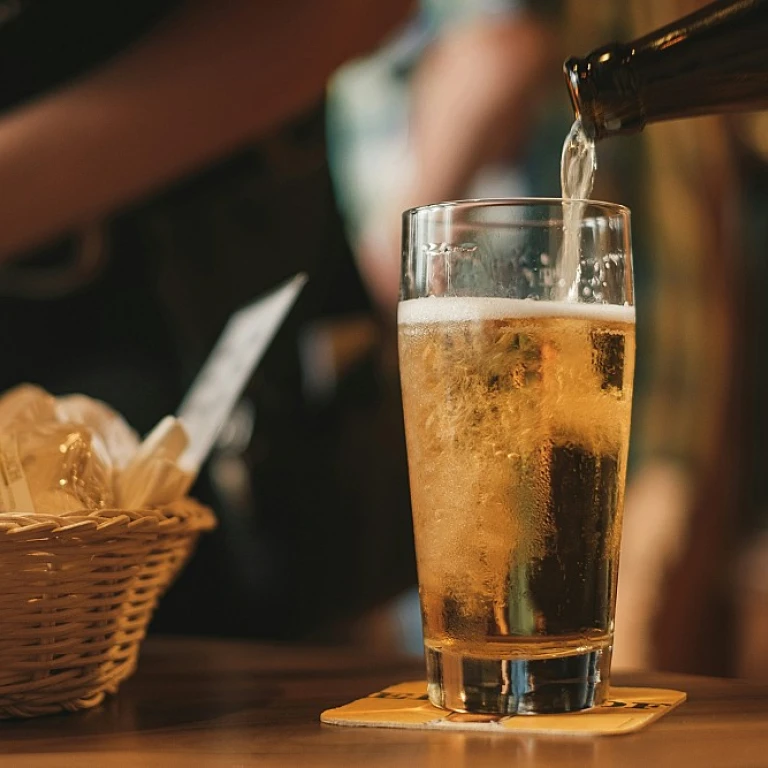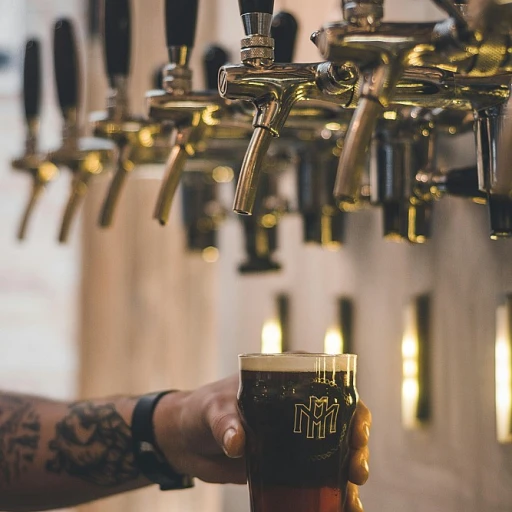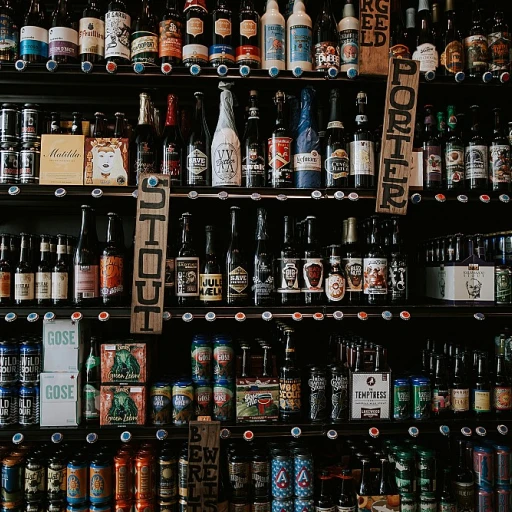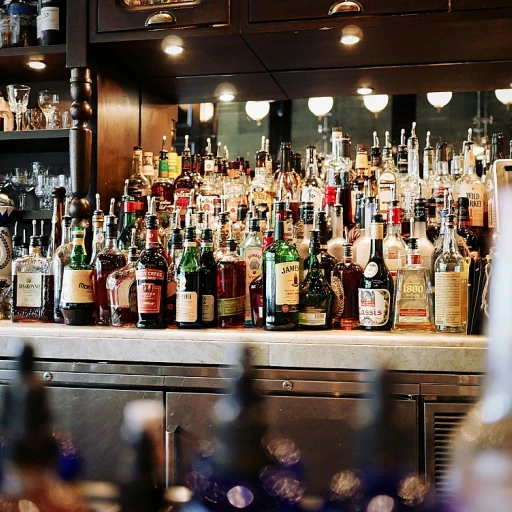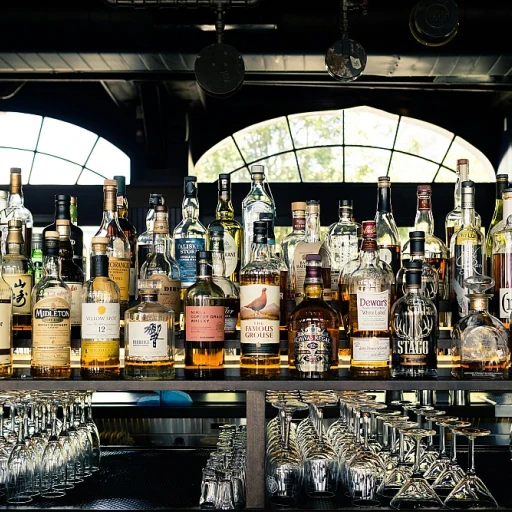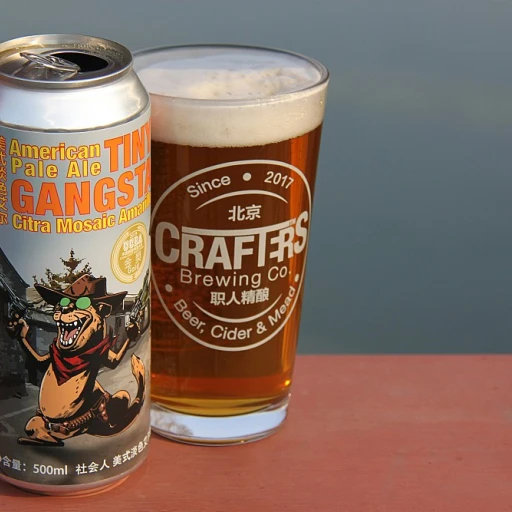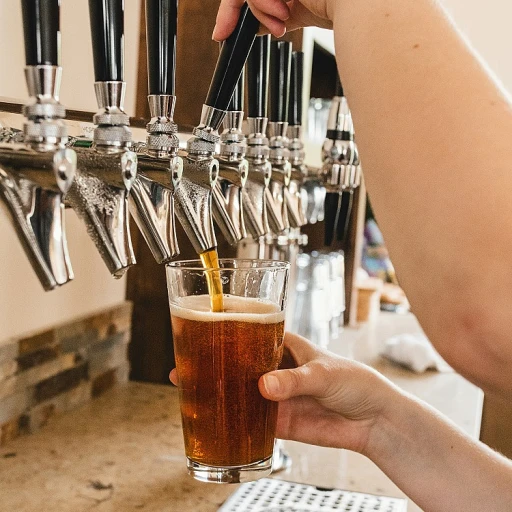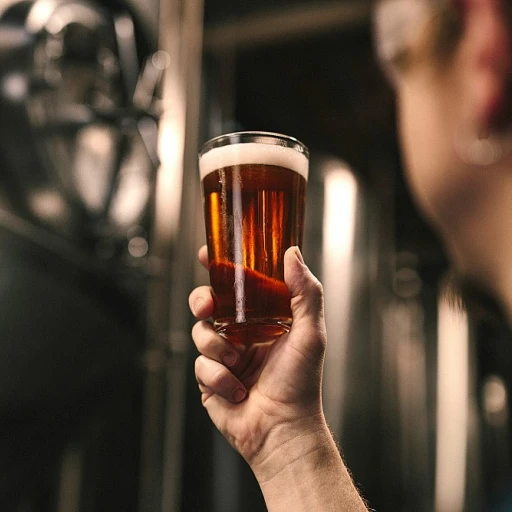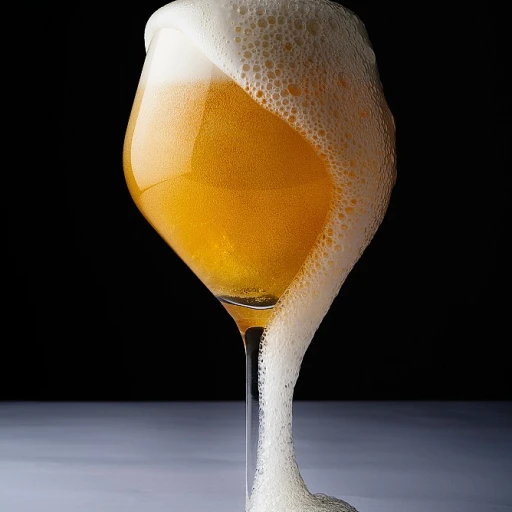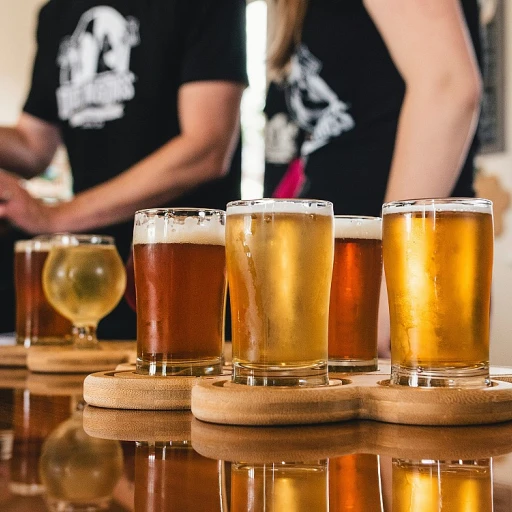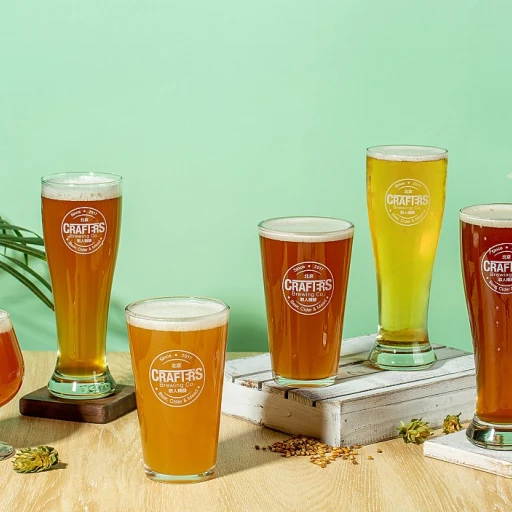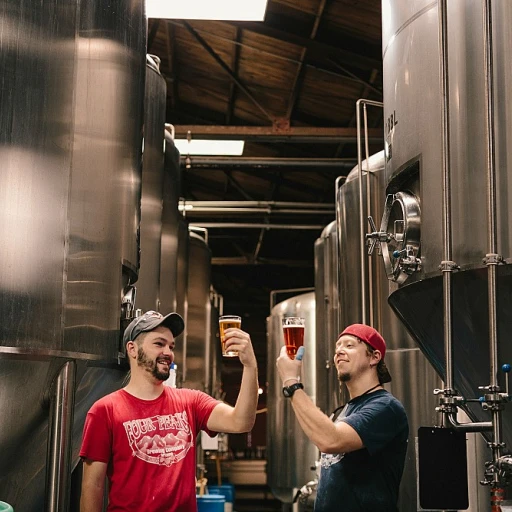The origins of root beer and its transformation into hard root beer
From ancient roots to a modern twist
Root beer has roots deep in American history, tracing back to indigenous recipes involving roots, bark, and herbs. It wasn't always the sweet, frothy drink we're familiar with today. Early iterations were medicinal concoctions aimed more at curing ailments than quenching thirst.The transformation into hard root beer is a testament to innovation in the brewery sector. The adult twist came much later in 2013, spearheaded by Tim Kovac of Small Town Brewery, based in Wauconda, Illinois. Kovac's inspiration was drawn from his great-great-grandfather's recipe that combined unique botanicals and spices. The first commercially successful hard root beer, Not Your Father's Root Beer, made waves and set the stage for a new category in alcoholic beverages.
Anheuser-Busch followed suit with their Best Damn Root Beer, while Coney Island Brewing Co., under Pabst Brewing Company in California, introduced their variant of hard root beer, enriching the choices for enthusiasts. By transforming a soft drink into an alcoholic option, these brands effectively bridged the gap between traditional beer drinkers and those seeking something unique.
The rise of craft breweries has fueled the development of diverse and interesting variants, each with its unique twist. Ingredients like cane sugar, ginger, and various yeasts have brought about sophisticated flavors far removed from the everyday. This journey from a health tonic to a beloved alcoholic beverage illustrates the adaptability and creativity within the beer industry, laying the groundwork for even more innovations.
In this evolving landscape, the history and tradition of root beer brewing blend seamlessly with modern techniques to create an experience that's both nostalgic and novel. Now, as hard root beers increasingly appear on shelves, they're not just a trend but a staple for many. And that's only a part of the intriguing story of this unique drink.
The craft of brewing hard root beer
The meticulous brewing process
Brewing hard root beer begins with the traditional root beer base, an infusion of various roots, herbs, and spices. Modern hard root beer keeps the spirit of father root beer alive through carefully selected ingredients. Breweries such as Small Town Brewery in Illinois and Coney Island Brewing Co. in New York are known for their unique recipes.
The primary components include water, sugar — often cane sugar — and yeast. To ensure a unique profile, brewers might add additional ingredients like ginger, vanilla, and other spices. A significant part of the brewing lies in maintaining specific temperatures and preventing direct sunlight to maintain the beverage's quality over several days.
Fermentation and ingredients
Fermentation is where the magic happens. Like traditional beer, hard root beer undergoes fermentation where yeast converts the sugars into alcohol. Different strains of yeast are used, including packet yeast and yeast nutrient, depending on the desired outcome. Brewers constantly monitor the fermentation process to avoid any unwanted flavors.
Alcohol content in hard root beers typically ranges between 5-7%. Popular brands like Not Your Father’s Root Beer by Small Town Brewery have managed to strike the right balance between sweetness and alcohol content, making it a popular choice among enthusiasts.
Ensuring a distinct flavor
What's unique about hard root beer is its distinct flavor profile. Brewers pay close attention to the ingredients and the process to ensure every bottle delivers a rich and sweet taste that distinguishes it from both ginger beer and traditional root beers. The use of high-quality cane sugar and carefully curated spices sets high standards in the industry.
For those interested in what makes a great hard root beer, understanding the brewing process can offer insights into the importance of ingredient selection and meticulous brewing methods. Brands like Demon Brewing Co. and Coney Island Brewing Co. are standout examples in perfecting this art, providing consumers with a memorable drinking experience.
Cases of innovation
Innovations in brewing techniques have resulted in many new flavors and styles, turning hard root beer into a versatile drink for different occasions. Breweries in California, Wisconsin, and even Canada continue to push the boundaries of what's possible, maintaining a competitive edge in the market.
The future looks promising for hard root beer as new trends emerge and consumer interest grows. The involvement of giants like Anheuser-Busch indicates a significant potential for this beverage category in expanding the already diverse landscape of alcoholic drinks.
Popular brands and their impact: from Small Town Brewery to Coney Island Brewing Co.
Small Town Brewery: a pioneer in the hard root beer renaissance
In the midst of the craft beer boom, Illinois-based Small Town Brewery took a daring step in 2015 by launching Not Your Father's Root Beer. This 5.9% ABV concoction not only created a buzz but also laid the groundwork for what would become a rapidly growing trend. They crafted a product that brought nostalgic flavors of traditional root beer combined with the allure of alcohol, catering to those seeking unique flavors and experiences. According to a study by Beer Marketing Insights, sales of Not Your Father's Root Beer exceeded $7 million in its first year, showcasing the massive demand for hard root beer.
Coney Island Brewing Co.: bringing ingenuity to the table
Joining the fray not long after was New York's Coney Island Brewing Co., offering their own hard root beer at 5.8% ABV. Inspired by the amusement park culture of Coney Island, this brewery focused on creating fun, flavorful drinks that appealed to a wide audience. The nostalgic flavors, paired with an amusing branding strategy, pressed Coney Island Hard Root Beer into the limelight. In 2016, it was ranked among the top-selling hard sodas in the U.S., according to Brewers Association.
Hitting shelves: best damn and others
The surge in popularity of these pioneering brands paved the way for others, including Best Damn, which offered 'fire brewed' hard root beers designed for mass appeal. Owned by Anheuser-Busch, Best Damn leveraged its vast distribution network to reach shelves across the United States rapidly. Fast forward to its initial months, the company reported a significant rise in product availability, and it was soon touted as one of the best-value buys even when buying a case of beer.
Crafting national taste recognition: Wisconsin to California
Smaller breweries didn't shy away from experimenting; Wisconsin's Sprecher Brewing Co. and California's Mission Brewery introduced their twists to the hard root beer category. Sprecher, for instance, opted for authentic ingredients like honey and Wisconsin ginseng, whereas Mission Brewery integrated bold spices and flavors for a unique twist. The diverse range of offerings allowed hard root beer to secure a broad target market, making it a staple in bars, stores, and even at home parties.
Craft brewing and future brands
The widespread acceptance and enthusiasm for hard root beer have encouraged brewing companies to innovate further. Noteworthy mentions include Chicago's Demon Brewing Co. and La Crosse's Pearl Street Brewery, both bringing exciting new variations to the market. The trend is clear: hard root beer is here to stay and flourish, transforming from a niche curiosity into a beloved beverage, proving once more that there is always room for creativity and nostalgia in the world of alcohol.
Understanding the flavor profile: what makes hard root beer distinct?
Unique Taste and Aromas
When talking about the flavor profile of hard root beer, expect a sweetened, creamy base reminiscent of traditional root beer. It's often characterized by a complex mix of sweet, spicy and earthy flavors derived from roots, herbs and bark. Notable ingredients include:
- Wintergreen
- Vanillin
- Licorice
- Sassafras
These components create an inviting, nostalgic essence, echoing childhood days of enjoying soda while introducing a modern alcoholic twist.
The Influence of Alcohol
The addition of alcohol to root beer brings a subtle warmth and slight fermentation tang that perfectly balances its sweeter notes. Usually, the alcohol content in hard root beers ranges from 5.5% to 7.5% ABV. This not only elevates the drink's complexity but also adds a punch that root beer aficionados appreciate.
Diverse Brewing Techniques
How hard root beers are brewed plays a significant role in their flavor profile. Small Town Brewery and Conley Island Brewing Co. create their unique taste through various brewing methods. While some prioritize fire-brewing for richer texture and depth, others go traditional with small-batch brewing to maintain ancestral essence.
The Importance of Cane Sugar and Yeast
Cane sugar and yeast are essential in hard root beer production. Cane sugar contributes a specific sweetness that's smoother than regular sugar, and the yeast determines the level of carbonation and final taste. Whether using ginger or packet yeast, maintaining the temperature during fermentation days is crucial for achieving the desired consistency.
Interactive Sensation
A significant part of loving hard root beer is its interactive sensation. The familiar but enhanced root beer flavors are both challenging and comforting, creating a delightful drinking experience.
Expert Insights
John Klein, a brewmaster at Coney Island Brewing Co., notes that “the secret lies in balancing traditional root beer ingredients with modern brewing techniques to create a drink that's both nostalgic and refreshing.” With attention to detail and a flair for experimentation, breweries are pushing the envelope on the root beer taste.
Case Study: Small Town Brewery
Launched in La Crosse, Wisconsin, Small Town Brewery's “Not Your Father’s Root Beer” has been a game-changer. It utilizes honey and vanilla to create a smooth, impactful taste rivaling traditional root beer. The addition of an alcoholic twist has set it apart, driving its popularity in the US and Canada.
Understanding the flavor profile of hard root beer helps in appreciating the detail and creativity behind this unique beverage.
Market trends: the rise of hard root beer in the U.S. and beyond
The growing popularity of hard root beer
Hard root beer, despite being a relatively recent addition to the world of alcoholic beverages, has seen a rapid rise in popularity. One of the key factors behind this surge is the continued innovation in the ingredient profile, catering to diverse consumer tastes. In the U.S., hard root beer sales saw an uptick of 15% in 2022, according to data from Nielsen.
A major player contributing to this growth has been Small Town Brewery with their 'Not Your Father's Root Beer'. By 2016, it became one of the fastest-growing alcoholic drinks, reaching millions of dollars in sales, and setting the stage for other breweries to start experimenting with this beverage. Similarly, Coney Island Brewing Co. introduced 'Hard Root Beer', which quickly gained a dedicated fan base.
The global market reach
Beyond just the United States, the popularity of hard root beer has spread to international markets. Canada and parts of Europe have embraced this unique drink. For example, in 2021, Canada saw a 10% increase in imported hard root beers, showcasing the expanding taste for this beverage beyond the American borders. Breweries like Demon Brewing Co. in the UK have also released their versions, adding to the drink's global appeal.
Fluctuating demand and seasonal trends
The demand for hard root beer isn't constant throughout the year. There's a pronounced spike during summer months when consumers are looking for refreshing alternatives to traditional beverages. In the U.S., data from IRI Worldwide shows that sales peak between June and August, aligning with BBQs, beach outings, and other summer activities. Fall and winter, however, see a slight decline, likely due to the shift towards warmer drinks.
Health consciousness impacting choices
The health-conscious trend among consumers is influencing the market dynamics for hard root beer. Traditional recipes, boasting high sugar content, face scrutiny from modern consumers who prioritize low-sugar and low-calorie options. According to Mintel, 35% of alcoholic beverage consumers in the U.S. are now seeking drinks with reduced sugar content. Breweries are responding by creating 'light' versions with fewer calories and less sugar, such as Anheuser-Busch's 'Best Damn Root Beer' which highlights a balanced approach to sweetness and flavor.
Demographics and consumer profiles
Understanding the consumer base for hard root beer is essential for grasping its market trends. The majority of hard root beer drinkers fall within the 21-35 age range, according to a report by Demeter Group's Beverage Research Division. This demographic mix includes both craft beer enthusiasts and those who enjoy soda, showing the broad appeal of the beverage. Additionally, there is a notable crossover with fans of other hard sodas like hard ginger ale and hard cola.
The market trends are clear: hard root beer isn't just a passing fad. It's carving out a significant niche in the beverage world, influenced by factors like global reach, health trends, seasonal demand, and demographic preferences. Whether you're a brewery looking to innovate or a consumer curious about the next big thing in drinks, hard root beer is a trend worth watching closely.
Health and nutritional insights: what's in your bottle?
An in-depth look at what's inside your bottle
We're all about transparency here, so let's break down what you can expect in hard root beer. You might think it's just a souped-up version of your childhood favorite, but there's more beneath the surface.
Alcohol content and calories
Hard root beer typically hovers around 5-7% ABV (alcohol by volume). But don't be fooled by the sweetness; all those sugars mean calories add up fast. A 12-ounce bottle often packs in 200-300 calories. That’s like drinking a candy bar, folks!
Sugar and sweeteners
Modern hard root beers are all about that sweet, nostalgic flavor. To get there, brewers add a plethora of sugars and sweeteners. It’s common to see cane sugar, high fructose corn syrup, and even stevia on the label. Although this gives it that signature sweetness, it's also a thumbtack on your sugar intake for the day.
Nutritional impacts
Let’s face it, drinking hard root beer isn’t the healthiest thing you can do for your body. Beyond the calorie count, the sugars can wreak havoc on your glucose levels and teeth. The high sugar content has also been linked to weight gain and other metabolic issues. Moderation is key, friends.
Artificial and natural flavors
Ever wonder why every brand tastes a bit different? The secret is in the mix of artificial and natural flavors used by each brewer. Ingredients like vanilla, wintergreen, licorice, and even ginger are melded together to create a unique profile for each brewing company.
Specialty ingredients
Some brewers add unique twists to set their hard root beers apart. For example, Coney Island Brewing Co. sometimes uses specialty yeasts and different combinations of spices to craft their distinct flavors. Each brand's recipe is a guarded secret, much like the Colonel's chicken seasoning.
Health trends and consumer concerns
There's growing awareness about what goes into alcoholic beverages. Many consumers are now reading labels more closely and asking questions. Some brands are responding by offering options with lower sugars or fewer artificial ingredients. A healthier version of root beer isn't just a pipe dream.
Mixology and recipes: how to enjoy your hard root beer
Classic cocktails with a twist
Imagine sipping a traditional root beer float, but with a kick of alcohol. Hard root beer makes this dream a reality. With a rich and creamy texture, it turns an ordinary float into a boozy delight. Mix two scoops of vanilla ice cream with your favorite hard root beer, and you've got a sweet, satisfying treat.
Hard root beer punches
If you're into punches, try adding hard root beer to the mix. Combine it with ginger beer, a splash of lime, and some cane sugar for sweetness. You'd be surprised how well ginger complements the rich flavors of hard root beer.
Boozy root beer float
Speaking of floats, how about a hard root beer version? It's simple. Scoop some vanilla ice cream into a tall glass and pour your favorite hard root beer over it. Voilà! You've got yourself a boozy float that's a hit at any gathering.
Spiced hard root beer cocktails
For those who enjoy spiced beverages, you can mix hard root beer with fire-brewed ginger beer and a splash of spiced rum. The spicy notes from the rum and ginger highlight the deep, sweet flavors of the hard root beer, making for a drink that's both warming and refreshing.
The root beer mule
Imagine a Moscow mule, but instead of the usual ginger beer, use hard root beer. Combine it with vodka and a squeeze of lime, and you've got yourself a root beer mule. The complexity of the hard root beer elevates this classic cocktail to new heights.
Root beer whiskey smash
If whiskey is your go-to spirit, try a root beer whiskey smash. Muddle mint leaves with a bit of cane sugar, add a shot of whiskey, and top it off with hard root beer. The sweetness of the root beer and the warmth of the whiskey create a balanced, aromatic drink.
The island twist
Finally, for something more tropical, blend hard root beer with a dash of pineapple juice and a splash of coconut rum. This island twist will transport you straight to a beach with every sip.
The future of hard root beer: innovations and potential
The innovative landscape of hard root beer
Hard root beer has come a long way since its inception, with a myriad of breweries pushing the boundaries of creativity and taste. Renowned brands such as Coney Island Brewing Co. and Small Town Brewery have played significant roles in propelling this flavorful beverage to new heights.
Emerging trends and market predictions
The popularity of hard root beer in the United States shows no sign of waning. Recent market analysis suggests a projected annual growth rate of 7% in the alcoholic soda category, which includes hard root beer. According to Statista, the hard soda market, where hard root beer thrives, was valued at approximately $176 million in 2021.
Innovations in brewing techniques
Brewers are constantly experimenting with new techniques, from adjusting sugar levels to blending exotic spices like ginger and cinnamon. A notable innovation is the use of yeast nutrients to enhance fermentation, leading to richer and more complex flavor profiles. Fire brewed methods are becoming increasingly popular, giving hard root beers like Best Damn Root Beer a distinct smoky and caramel-like flavor.
Health-conscious and low-sugar options
With the rising demand for healthier beverage options, breweries are offering low-sugar and even sugar-free variants to cater to health-conscious consumers. Using ingredients like cane sugar and natural sweeteners, these options provide an alternative for those looking to enjoy hard root beer without excessive calories.
Crafting unique blends and collaborations
Microbreweries and large brewing companies alike are collaborating to produce exclusive and limited-edition hard root beers. These partnerships often result in unique flavor combinations that incorporate local ingredients and traditional brewing methods. For instance, Wisconsin's La Crosse Brewing Co. has teamed up with local artisans to create a hard root beer infused with local honey and spices, offering a distinct regional twist.
Exploring international markets
While hard root beer remains predominantly popular in America, there's a growing interest in international markets such as Canada and parts of Europe. Market studies indicate an increasing acceptance and curiosity towards this American classic, with potential for expansion in the coming years.
Future potential in mixology
As interest in creative mixology continues to rise, bartenders are incorporating hard root beer into an array of innovative cocktails. From simple mixes with IPA to more elaborate concoctions featuring rum and ginger beer, hard root beer's versatility is being showcased in bars and restaurants across the globe.
In essence, the future of hard root beer is bright, with ongoing innovations and a growing market ensuring its continued evolution and popularity. Whether you're a connoisseur or a casual drinker, there's no doubt that hard root beer will continue to surprise and delight taste buds everywhere.

